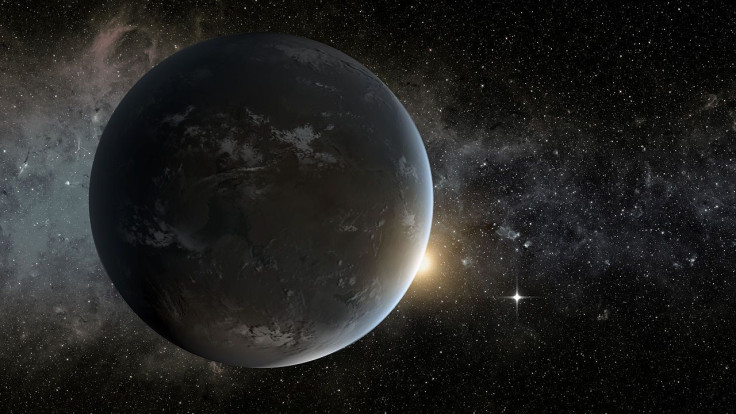NASA’s Kepler Makes A Comeback, Discovers New Exoplanet 180 Light-Years From Earth

The Kepler spacecraft, which was launched in 2009 by NASA to find Earth-like planets orbiting other stars, has found yet another exoplanet, which orbits around a star much smaller and cooler than the sun. The exoplanet, 180 light-years from Earth, marks the first discover by Kepler as part of the new K2 mission, which was approved by NASA in May.
The new exoplanet, dubbed “HIP 116454b,” is 2.5 times the diameter of Earth and follows a close, nine-day orbit around its parent star, whose small size and cool temperature make the planet too hot to support life. The latest discovery was made after astronomers and engineers developed a new method to reuse Kepler, which had suffered a technical hitch, for the K2 mission. Following this, the planet-hunting spacecraft was able to continue its search of the universe for other worlds.
“Last summer, the possibility of a scientifically productive mission for Kepler after its reaction wheel failure in its extended mission was not part of the conversation,” Paul Hertz, NASA's astrophysics division director at the agency's headquarters in Washington, said in a statement. “Today … Kepler may well deliver the first candidates for follow-up study by the James Webb Space Telescope to characterize the atmospheres of distant worlds and search for signatures of life.”
Kepler, which was initially expected to last until 2016, encountered a serious anomaly when the second of its four reaction wheels failed in May 2013, disabling the spacecraft to collect data. In November last year, scientists proposed the K2 mission, which included utilizing the disabled Kepler in a way that could detect habitable planets.
As part of the discovery, lead researcher Andrew Vanderburg of the Harvard-Smithsonian Center for Astrophysics in Cambridge, Massachusetts, examined data provided by the Kepler spacecraft during a test of K2 in February. However, the discovery of the planet was confirmed with measurements collected by the Telescopio Nazionale Galileo, an Italian telescope located on the island of La Palma in the Canary Islands.
“The Kepler mission showed us that planets larger in size than Earth and smaller than Neptune are common in the galaxy, yet they are absent in our solar system,” Steve Howell, a K2 project scientist at NASA, said in the statement.
Since the K2 mission officially began in May, Kepler has observed more than 35,000 stars and collected data on several planetary objects within the solar system.
© Copyright IBTimes 2025. All rights reserved.






















